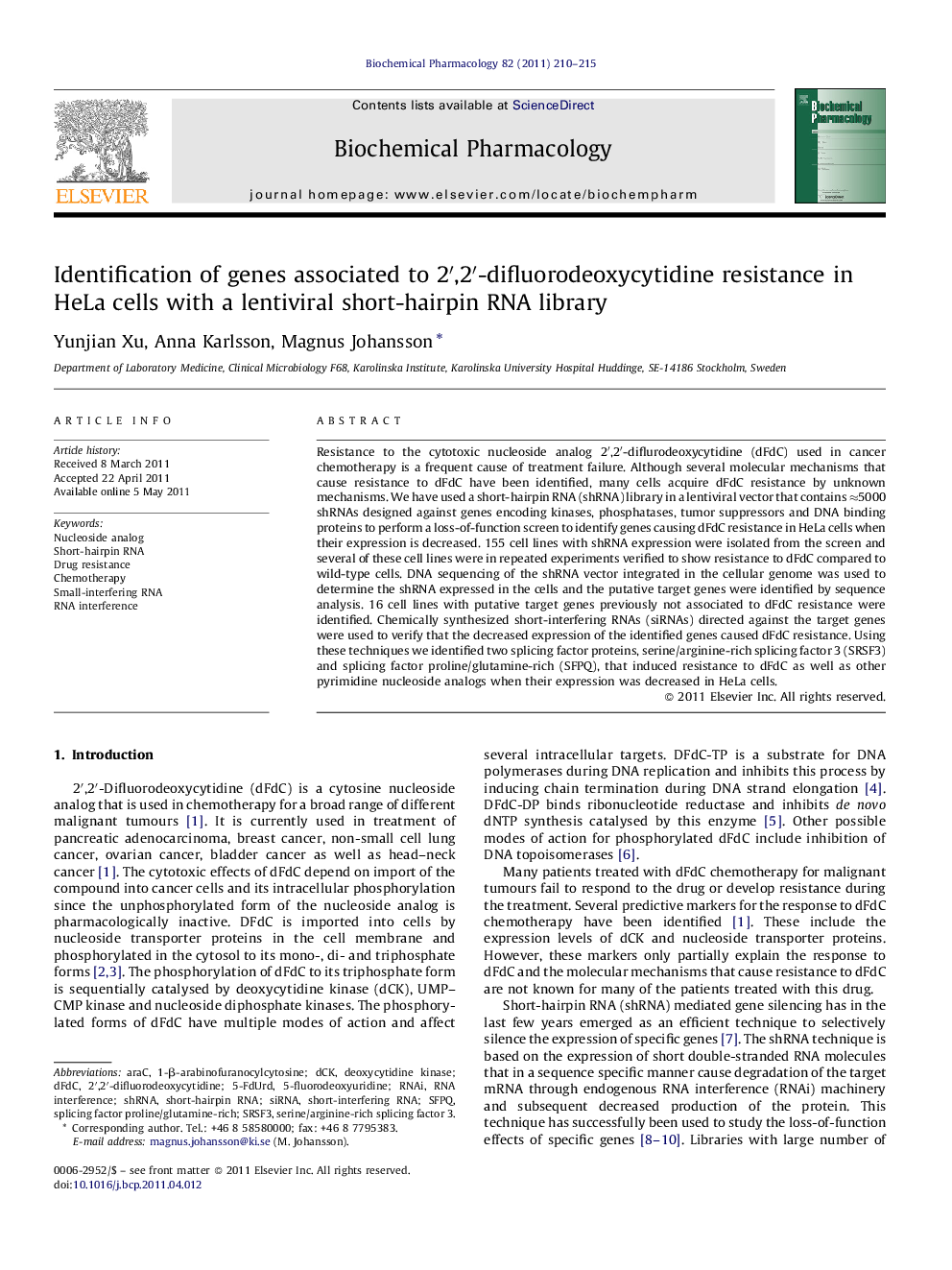| Article ID | Journal | Published Year | Pages | File Type |
|---|---|---|---|---|
| 5824047 | Biochemical Pharmacology | 2011 | 6 Pages |
Abstract
Resistance to the cytotoxic nucleoside analog 2â²,2â²-diflurodeoxycytidine (dFdC) used in cancer chemotherapy is a frequent cause of treatment failure. Although several molecular mechanisms that cause resistance to dFdC have been identified, many cells acquire dFdC resistance by unknown mechanisms. We have used a short-hairpin RNA (shRNA) library in a lentiviral vector that contains â5000 shRNAs designed against genes encoding kinases, phosphatases, tumor suppressors and DNA binding proteins to perform a loss-of-function screen to identify genes causing dFdC resistance in HeLa cells when their expression is decreased. 155 cell lines with shRNA expression were isolated from the screen and several of these cell lines were in repeated experiments verified to show resistance to dFdC compared to wild-type cells. DNA sequencing of the shRNA vector integrated in the cellular genome was used to determine the shRNA expressed in the cells and the putative target genes were identified by sequence analysis. 16 cell lines with putative target genes previously not associated to dFdC resistance were identified. Chemically synthesized short-interfering RNAs (siRNAs) directed against the target genes were used to verify that the decreased expression of the identified genes caused dFdC resistance. Using these techniques we identified two splicing factor proteins, serine/arginine-rich splicing factor 3 (SRSF3) and splicing factor proline/glutamine-rich (SFPQ), that induced resistance to dFdC as well as other pyrimidine nucleoside analogs when their expression was decreased in HeLa cells.
Keywords
Related Topics
Health Sciences
Pharmacology, Toxicology and Pharmaceutical Science
Pharmacology
Authors
Yunjian Xu, Anna Karlsson, Magnus Johansson,
